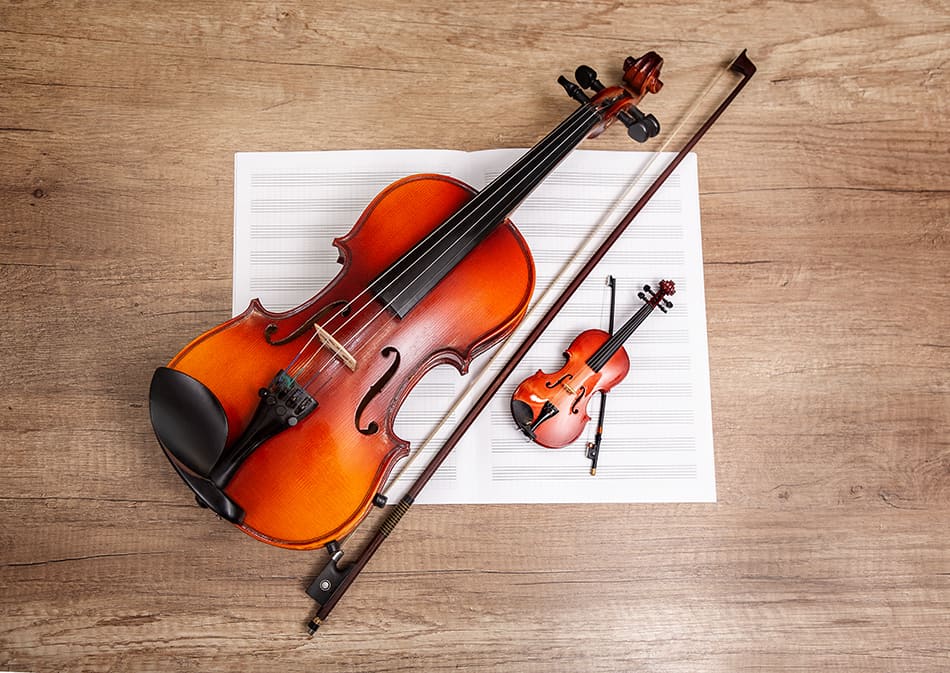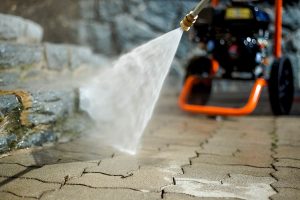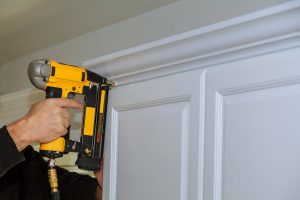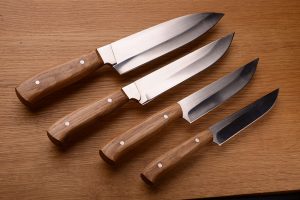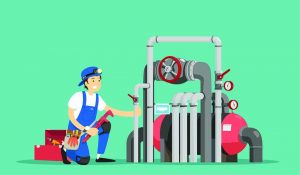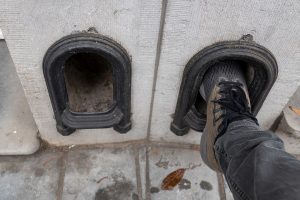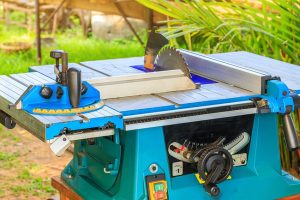The violin is a musical instrument that is classified under string instruments. It is a complex, delicate, and beautiful musical instrument. It is also a terrific piece for the living room stuff or music room. As a violinist, a violin student, or someone interested in violins, it is necessary to know the parts and components of a violin, the uses of these components, and how they work.
Our focus here is the modern violin and not the ancestral instrument that predated it.
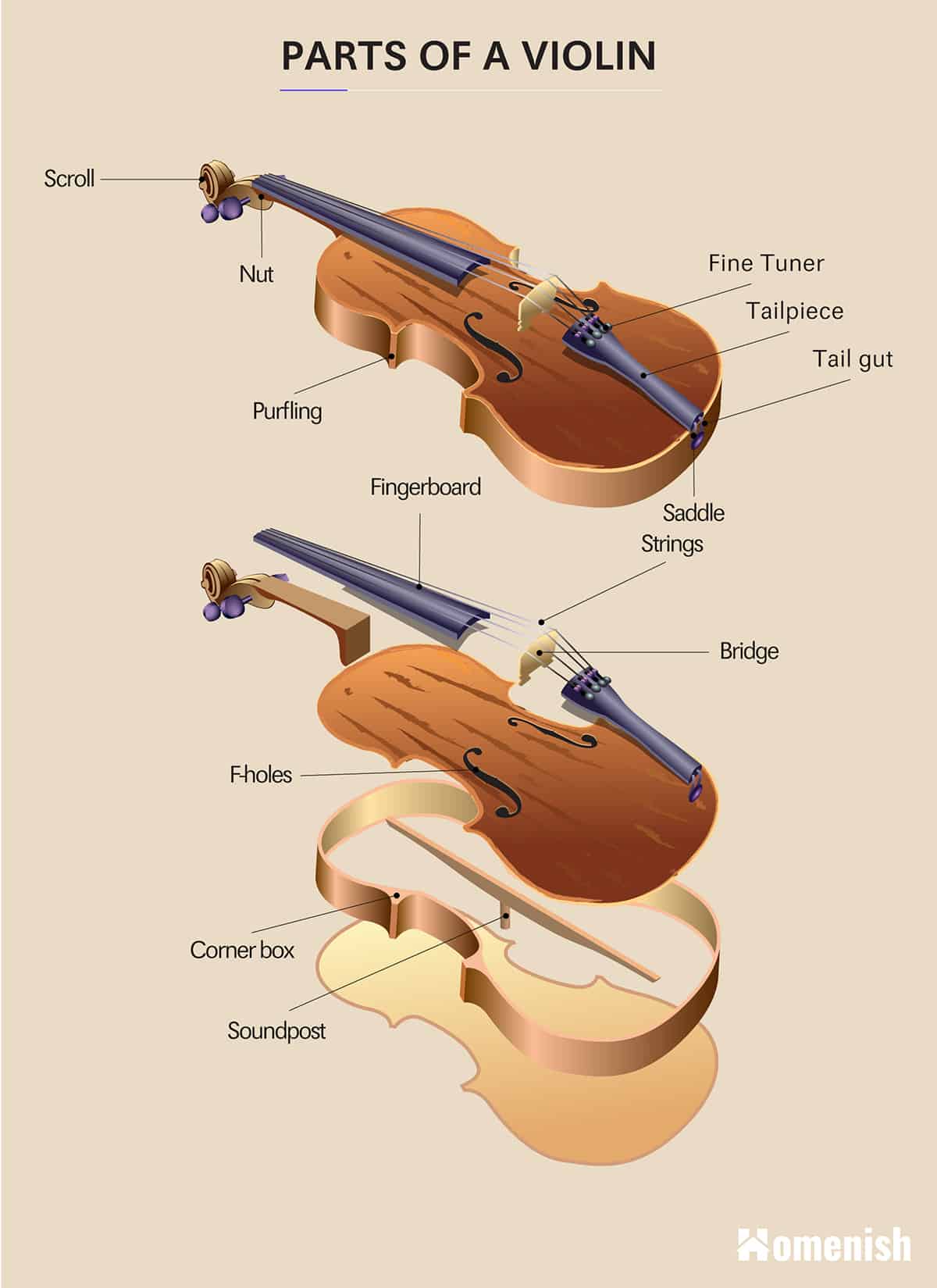
- Scroll: the scroll can be found at the top of the violin. It is the decorative part of a violin, and it is often carved in different shapes and forms, such as a spiral, scroll, or an animal or human’s head. It is really of no importance and is just there for decorative purposes.
- Pegbox: just below the scroll is the pegbox in which the pegs and strings are inserted. It houses the four pegs and one end of the strings.
- Peg: there are four pegs inserted in the pegbox. These pegs are used in tightening or loosening the strings and adjusting the pitch of the violin. Turning the peg clockwise tightens the string, which in turn sharpens the pitch of the violin while turning the peg anticlockwise loosen the string and flattens the pitch of the violin. It is important to note that when tightening the strings, turning the pegs too fast or too far can cause the strings to snap as it makes the string too tight.
- Nut: this is a piece of wood that is found between the pegbox and the neck. It has four indentations on which each string emerges from the pegbox over the fingerboard. It manages the positioning and height of the strings and also prevents the strings from moving out of their position.
- Neck: this is the part that is between the body of the violin and the pegbox. It is a long, thin piece of wood that protrudes from the body of the violin. It plays an important role in supporting the strings, and it takes most of the tensions of the string. It also plays a vital role by supporting the finger bored of the violin.
- Fingerboard: the fingerboard is attached to the neck of the violin. It is a smooth flat wood where the violinist presses on the string to generate different notes and pitches.
- The Body: the body is the largest part of the violin. It has a top plate and a backplate which is connected by the ribs, which are located on the side of the violin. On the body of the violin are several important features, which include the f-hole, the bridge, etc.
- Rib: these are wooden strip that is by the side of the violin. It is used to connect the top and back of the violin to form the soundbox of the instrument. It is very thin and is about 1mm thick.
- Purfling: purfling is a narrow and thin strip of wood that is set in a decorative design into the surface of the top plate around the edge of the violin. It beautifies the violin, but more than beautifying it also protects it from damage.
- Corner box: these are wooden blocks place inside a violin to maintain the building of the violin.
- Strings: the violin has four strings named from left to right as G, D, A, E, with G being the lowest and A the highest. The strings are tuned in musical intervals of five. They can be made from different materials like synthetic material, steel, or animal guts. They are connected to the pegbox at one end and the tailpiece at the other end.
- F-holes: these are holes found on the body of a violin. They are shaped like the italicized letter ‘F.’ Its function is to project the sound out of the hollow body of the violin.
- Bridge: this is an arc-shaped piece of wood that is placed under the strings. It is always between the two f-holes. The vibration of the string stops at the bridge and is transmitted from the string into the hollow body of the violin. The more flattened the arc of the bridge, the easier it is to play on more than one string at a time and vice versa.
- Soundpost: this is found inside the violin directly under the right side of the bridge. It is very important in the transmission of vibrations from the strings to the body of the violin to produce sound. The position of the soundpost can alter the quality of the sound either in terms of volume or the quality of the tone. The soundpost joins the front and back plate together, and it also supports the structure of the violin.
- Fine Tuner: the fine tuners are small button-like steels found on the tailpiece. They are used to tune strings by making small amendments to the string tension. Fine tuners do not function as much as pegs do in tuning, but they can be used in making little corrections if the string is a bit sharp or flat. Some violins have four fine tuners for all strings, while some have only for the ‘E’ string.
- Tailpiece: the tailpiece is a triangular piece of wood on which the strings are attached on the lower end of the violin.
- Tail gut: a violin’s tailgut is used to connect the tailpiece to the end of the violin.
- Chinrest: the chin rest is found at the end of the body and is attached closely to the tailpiece. It is mostly either plastic or wooden. It is used as a platform on which the chin or jawbone is placed when you want to play the violin.
- Saddle: this is a rectangular block of wood found inside the violin. It assists in relieving the pressure applied on the body by the force of the tension of the string and also supports the tailgut.
- Pickup: this changes the violin’s acoustic vibration to an electric signal that is now sent into an amplifier. This feature is found in an electric violin.
